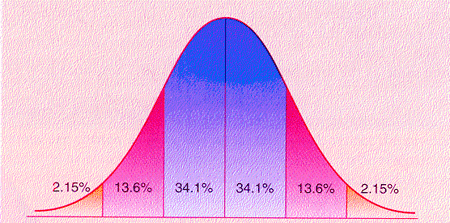 Several techniques are available for navigating the financial markets. Technical analysis, which mainly centers on price patterns and trends to project price action, is the basis that most traders use to place trades. And, an example of technical analysis that is growing in popularity is quantitative trading analysis. It refers to a method of trading that employs supercomputer analysis as well as complicated algorithms to hunt out profitable yields in the market. A common tool used in carrying out quantitative trading analysis is the R programming language. Initially designed by Ross Ihaka and Robert Gentleman at the University of Auckland, R refers to a functional language for statistical computation and graphics. R can be said to be an open source implementation of the S language, which was developed by AT&T, and has been a major milestone in how people interpret financial data. Notably, under the GNU General Public License, R has been made available to the public free of charge and it can be customized easily to reflect the needs of the user. The language can be downloaded at http://www.r-project.org/ and it has versions for various operating systems. The R programming language has greatly borrowed from the S-Plus language. The syntax of the two languages is considered to be closely related. Some notable features of R include availability of built-in tools for time series, regression etc, collection of intermediate tools for data analysis, efficient data handling capabilities, ease of production of properly-designed publication-quality plots, and enhanced graphing and visualization capacities. It is important to note that R is a rich and a well-suited language for carrying out quantitative trading analysis in the financial markets. When used properly, itís a valuable strategy one can use for making decisions on whether to enter or exit the market. And, a common way of using R in quantitative trading is for momentum identification. This technique looks for momentum in financial data, aiming to identify trends or hidden relationships, to forecast price action. The markets usually form trends that last for an extended period of time. Traders using R may employ the strategy with the aim of discovering possible trends in the market. Quantitative trading analysis using R is not as complicated as it may seem. The infrastructural design for the language has already been done for the user. Therefore, this enables the users to concentrate on what they are trying to achieve instead of focusing on the nitty-gritty of how to realize it. More over, its user-friendliness and price are very essential elements to the investment industry in the current price-conscious world. Lastly, R is designed such that it can be extended for specific uses. Importantly, there is ready assistance from the R community through discussion forums, mailing lists, and other means. The benefits of R are making an increasing number of traders to start using it for quantitative trading. Most of all, it is loved for its open source nature and the community around it that is dedicated at ensuring the problems of its members are amicably addressed. R has a very big contributor base, which also continues to grow day after day. More so, novel add-on packages are being created on a constant basis to increase the user-experience of its practitioners. As such, the use of R for generating trading signals will continue even in the coming years. Here is a simple example that can be used for merging two trade series using different securities. Note that this aims to result in a derived time series. And, the spread between the two financial instruments is more than 0.5. xy <- na.locf(merge(x, y)) xy[abs(xy$x - xy$y) > .5, "y"] Although this may be difficult to grasp for those seeing it for the first time, members of the R community undertaking time series analysis see it as bread and butter. In conclusion, quantitative trading analysis using R is easy to use and itís a very good method for identifying trade opportunities in the financial markets. R has an extensive supporting community that is always willing to address the problems of its members. More over, using it does not increase expenses in terms of product licensing or proprietary language expertise. R deviates from the complexity of analysis present in the current world of investment. Therefore, it is an innovative tool that makes quantitative analysis easier rather than harder. comments powered by Disqus |

|
|
|
|







